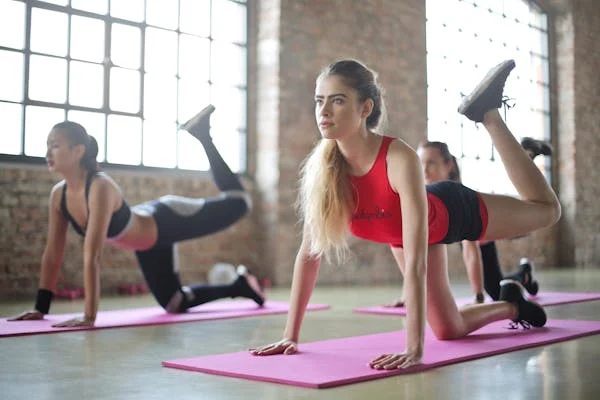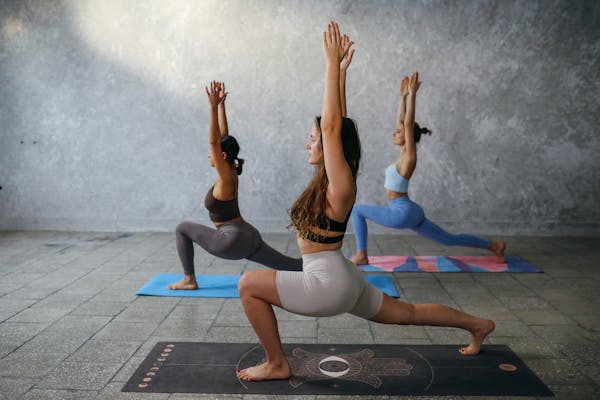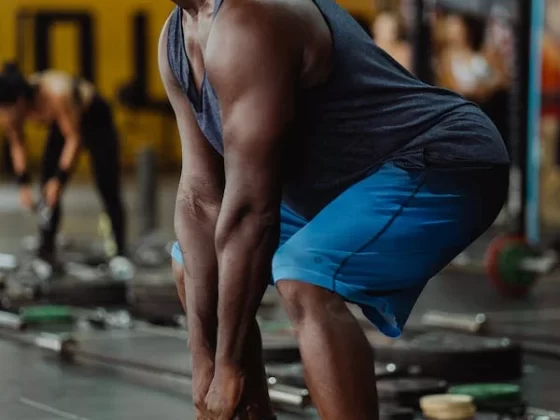
As time goes by, our workout routines become boring, and we feel like there are no longer any results out of doing it. Hence, we look for other training programs or exercises to incorporate into our fitness regimens. We are looking for something more strenuous but at the same time feasible. Something that would match our low-intensity exercises for a new and better result. So, in this article, we’ve curated 13 best HIIT Exercises accessible even at home to pair with your old routines.
Understanding HIIT:
High-Intensity Interval Training (HIIT) encompasses more than its name implies. It represents a specific type of training regime, and it’s feasible to engage in interval training without fully executing a genuine HIIT session.
The essence of HIIT lies in the repetition of highly intense work intervals interspersed with recovery periods. According to Noam Tamir, CSCS founder and CEO of TS Fitness in New York City, individuals push themselves nearly to their maximum capacity during work intervals.
HIIT stands in contrast to prolonged, low-intensity activities where energy is conserved to sustain the effort over an extended duration. Tamir notes that what many label “HIIT” in mainstream exercise classes often aligns more closely with circuit or interval training.
During actual HIIT sessions, the body relies on anaerobic pathways to break down glucose without oxygen to generate energy. Tamir explains that this process yields an immediate energy supply, albeit in limited quantities, restricting the duration of sustained maximum effort.
In authentic HIIT routines, work intervals typically last around 20 seconds, followed by substantial recovery periods of rest to work with ratios 2:1 or 3:1 . For instance, after a 20-second sprint, individuals would have 40 seconds to 1-minute rest before initiating the next interval. This contrasts with many popular HIIT variations where work periods are extended, and rest intervals are abbreviated, leading to reduced intensity levels.
Ensuring sufficient recovery before commencing the next interval is crucial. Franci Cohen, MS, a personal trainer and exercise physiologist, highlights that alternating between two disparate states primes the body for optimal cardio conditioning. “The rest periods are necessary to prepare the body and enable it to perform at maximum capacity during the high-intensity bursts,” she emphasizes.

Best HIIT Exercises: 13 Killer Moves and Equipment-Free Workouts!
These 13 HIIT exercises are curated for you! Incorporating these effective moves into your routine creates a DIY HIIT workout that torches calories and activates your muscles.
Here’s how it works: Complete each equipment-free HIIT exercise for one minute and then rest.
What you’ll need: No equipment, just a bit of space.
Hand-Release Push-Ups
- Start in a regular push-up position and lower your body to the ground.
- Briefly lift your hands off the ground, then exhale as you push your body back up. To adjust, drop to your knees — it still provides an effective HIIT workout at home.
Plyo Push-Ups
- Start from a push-up position and gradually lower your body to the floor.
- Propel yourself off the floor with force, lifting your hands off the ground before returning to the push-up position. To simplify, drop to your knees.
Russian Twists
- Position yourself on the floor with your heels either touching the ground or lifted (for a more advanced variation), and place your hands at your chest.
- Rotate your torso from side to side.
Single-Leg Burpees
- Begin by lowering your body into a squat position and placing your hands on the floor directly in front of your feet.
- Jump your feet back, allowing only one foot to touch the floor, and lower your body to the ground.
- Return your feet to the hands and then jump into the air using the same foot without allowing the other foot to touch the ground. Proceed to the next repetition without pausing.
- Repeat for 30 seconds on each side.
Supermans with Lateral Raises
- Begin by lying on your stomach and lifting your legs and arms off the floor, with your arms reaching straight in front. Contract your back and glutes to maintain the elevation of your legs.
- Pull your elbows down to your waist, return to the starting position, and repeat the movement.
Lateral Lunges with Hops
- Begin by stepping your left leg out to the side for a lateral lunge, keeping your right leg straight.
- Then, raise your left leg to a 90-degree angle and hop on your right leg. Repeat this sequence on both sides.
Tuck-Ups
- Start by lying on your back with your arms straight overhead. Crunch your legs into your chest while lifting your back off the floor.
- Grab your legs, balancing on your glutes. Go back to the initial position and replicate the motion.
Mountain Climbers
- Start by assuming a high plank position, ensuring your shoulders are above your wrists.
- Alternate driving each knee towards your chest quickly, simulating a running motion.
Plank Jacks
- Begin in a low plank position with your feet separated by the width of your hips.
- Hop your feet out wider than hip-width, then return them to the starting position. Ensure your abs remain engaged and avoid allowing your buttocks to rise above the height of your shoulders for an effective at-home HIIT workout routine.
Squat Thrusts
- Begin from a standing position, lowering your hands to the floor and kicking your feet back to assume a plank position.
- Hop your feet back to the center and return to the standing position.

Plank-Ups
- Commence in a high plank position. Position your right elbow under your right shoulder, then your left elbow under your left shoulder, transitioning to a low plank position. Ensure that your shoulders are stacked over your wrists.
- Push back up to the high plank position, beginning with your right arm.
- Repeat the sequence, alternating leading arms each time.
Flutter Kicks
- Lie on your back with your hands behind your head, keeping your head and shoulders lifted off the floor to engage your core.
- Maintain your legs extended and straight, raising one leg into the air while the other hovers parallel to the ground.
- Alternate between legs continuously, ensuring a steady and controlled motion throughout the exercise routine.
Star Jumps
- Stand with your feet together and jump off the ground, extending your arms and legs outward to form a star shape with your body.
- Upon landing, ensure your knees are slightly bent and your arms are positioned by your knees for stability.
How to Create an HIIT Exercise Program?
When designing a HIIT regimen, it’s essential to consider various factors such as the duration, intensity, and frequency of the work intervals, as well as the length of the recovery intervals. Aim for an intensity during the high-intensity work interval that exceeds 80% of your estimated maximal heart rate. Subjectively, the work interval should feel “hard” to “very hard,” using the talk test as a gauge, meaning it should be challenging to carry on a conversation. Target an intensity level of 40-50% of your estimated maximal heart rate for the recovery interval. This should feel comfortable and aid your recovery, preparing you for the following work interval.
The correlation between the work and recovery intervals holds significance in designing effective HIIT programs. Many studies emphasize a specific ratio of exercise to recovery to optimize various energy systems within the body. For instance, a 1:1 ratio might involve a 3-minute intense workout followed by a 3-minute recovery of low intensity. These 1:1 interval workouts typically entail 3, 4, or 5 minutes for both work and recovery phases.
Another popular HIIT training approach is the “sprint interval training method.” In this regimen, participants engage in about 30 seconds of sprint or near full-out effort, succeeded by 4 to 4.5 minutes of recovery. This cycle of exercise can be repeated 3 to 5 times. These higher-intensity work intervals are generally shorter, such as 30 seconds with sprint interval training.
The Initial Assessment:
Before embarking on an exercise regimen, undergoing a fitness evaluation, or significantly elevating your activity level, addressing the following inquiries is crucial. This Physical Activity Readiness Questionnaire (PAR-Q) determines your readiness to commence an exercise routine or program.
• Has your physician ever advised you to engage in physical activity only under medical supervision due to a heart condition?
• Do you feel chest discomfort during physical activity?
• Have you encountered chest discomfort in the past month while at rest?
• Do you experience dizziness leading to loss of balance or occasional loss of consciousness?
• Are you grappling with a bone or joint issue that could worsen with increased physical activity?
• Is your physician currently prescribing medications for blood pressure or heart-related concerns?
• Are there any known factors that might impede your participation in physical activity?
If you answered affirmatively to any of these questions, if you’re over 40 and have been sedentary lately, or if you harbor concerns about your well-being, consulting a medical professional before undergoing a fitness assessment or significantly intensifying physical activity is advisable. Conversely, if you responded negatively to all queries, you can commence exercising safely.

Before Engaging in Exercise:
Before starting any exercise regimen, including those illustrated in this brochure, individuals should obtain medical evaluation and clearance to participate in physical activity. Not all exercise programs are appropriate for everyone, and specific activities may lead to injury. It is essential to perform activities at a pace that feels comfortable for the individual. If any exercise elicits pain or discomfort, it should be stopped immediately, and prompt medical advice should be sought.
How Often Can You Do a HIIT Workout?
HIIT workouts are more demanding than steady-state endurance workouts, often requiring a more extended recovery period. Starting with one HIIT training session weekly is advisable, while your other workouts focus on steady-state exercises. As you feel more prepared for additional challenges, consider adding a second HIIT session to your weekly routine, ensuring you spread these workouts throughout the week.
Conclusion:
Interval training has long been a critical component of athletic training programs, catering to activities that demand short bursts of high-intensity movement. It’s increasingly recognized and favored as an effective training method. Integrating HIIT Exercises into your conditioning program can optimize cardiovascular fitness and yield numerous health benefits. Give these 13 HIIT Exercises a try!












